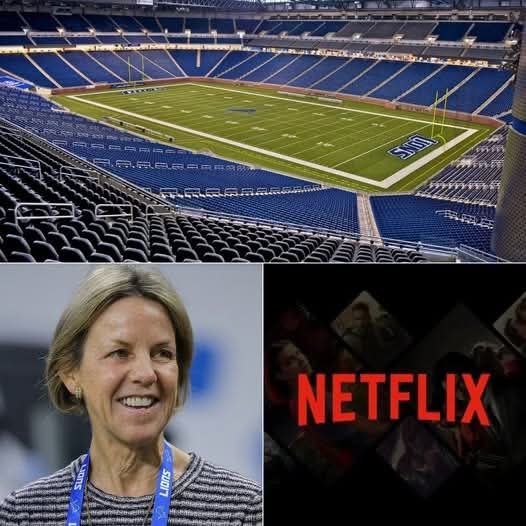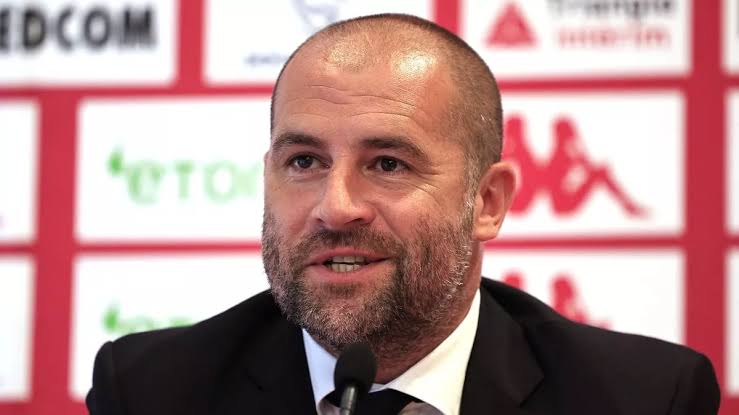Netflix’s recent \$13.5 million investment into the production of “Roar of the Lions: Detroit’s Comeback Story” marks not just a cinematic event, but a cultural reckoning, a celebration of spirit, resilience, and identity that extends beyond the gridiron. In this uniquely American tale, football is no longer just a sport—it’s a symphony of tradition, struggle, and redemption. And at the center of this story is a franchise long familiar with heartbreak, one that has come to symbolize not just the city of Detroit, but the entirety of America’s yearning spirit: the Detroit Lions.

The film, spearheaded by Lions owner Sheila Ford Hamp in partnership with Netflix, isn’t just another NFL documentary or highlight reel. It’s being described by insiders as a poetic tribute, part historical epic, part spiritual love letter, and part resurrection tale. With Ford Field Stadium acting as both the literal and metaphorical heart of the story, the film promises to blur the lines between architecture and emotion, between fans and warriors, and between a football team and the national identity of a country rediscovering its beating heart.
Roar of the Lions” isn’t aiming to be another typical sports drama filled with locker room clichés and heroic game-winning touchdowns—though those certainly make an appearance. Instead, it is set to be a narrative of identity and restoration, one that honors the decades when the Lions were a symbol of dashed hopes and silent perseverance, and then shifts to the present-day roar of triumph, with the team once again capturing the hearts and belief of their devoted fans. From Motown legends to blue-collar automotive workers, the story encapsulates all who have stood with Detroit through its rise, fall, and revival.
Detroit, once viewed as a city in decline, mirrors the arc of its football team. Once a towering industrial giant, Motor City became synonymous with economic downturns, unemployment, and decay. And yet, Detroit never stopped fighting. The same could be said of the Lions—decades of losing seasons, ridicule, and pain—but the fan base never wavered. Instead, they leaned into hope, embraced loyalty, and turned disappointment into a ritual of faith. It’s this shared spirit of defiance and belief that forms the emotional foundation of the film.
Directed by an acclaimed filmmaker known for emotionally gripping, visually lush storytelling, the movie is expected to span nearly a century of Lions history. It dives deep into the early days of the franchise, the unforgettable highs of the 1950s championship teams, and the long winters of discontent that followed. It revisits the Barry Sanders era—the beauty and tragedy of a generational talent burdened by a lackluster team—and the Calvin Johnson years, marked by breathtaking talent and aching endings. Yet, through every heartbreak, fans endured.
The film then turns sharply into the new era: the Dan Campbell-led renaissance, a coach who became more than a strategist—he became a symbol of grit and conviction. Under his leadership, and with a new generation of players like Aidan Hutchinson and Jared Goff embracing the legacy of Detroit toughness, the Lions have transformed into contenders. The team’s playoff run, its unforgettable victories, and the rejuvenated spirit of the city are central to the film’s climax.
What makes this project extraordinary is its framing: the movie doesn’t just tell a sports story—it tells a love story. Ford Field becomes a character of its own, not just a building of steel and concrete, but a living vessel of dreams and grief and unity. Through visual montages, intimate fan interviews, and narrated archival footage, the film makes the case that Ford Field is where Detroit’s soul gathers every fall, where families bond, where generations pass down belief like sacred scripture. It becomes not just a stadium, but a cathedral of hope.
Sheila Ford Hamp’s leadership is another emotional thread woven deeply into the film. Once a figure criticized by fans for representing the past, she emerges as a protagonist of change and vision. The documentary traces her evolution, her decision-making, her hiring of key figures like GM Brad Holmes and Coach Dan Campbell, and how her quiet confidence has shepherded the team from shadows to stardom. Netflix has reportedly spent significant resources filming exclusive behind-the-scenes moments with Ford Hamp, offering a rarely seen perspective of ownership driven by more than profit—by legacy and love.
Fans, of course, play a central role. “Roar of the Lions” incorporates first-hand stories from lifelong supporters—those who’ve attended games with their grandparents, who’ve tailgated in frigid conditions year after year without ever seeing their team win big. The film collects these voices and weaves them into a larger narrative of American loyalty. Some of the most powerful moments, according to early reports, come from fan footage—the grainy home videos of kids wearing Lions jerseys on Christmas morning, the teary-eyed reactions to playoff wins, and the elderly who’ve waited their entire lives to see Detroit rise again.
There is also a strong cultural and musical component. Detroit’s rich legacy in music—Motown, punk, techno—is used not just for background, but to draw deeper connections between art and sport, between expression and competition. The soundtrack is said to include original compositions by Detroit-native artists, blending classic soul with modern orchestral arrangements to give emotional weight to key scenes. When Lions players take the field amid Marvin Gaye’s voice or Jack White’s riffs, the film intends to remind viewers that this city, and this team, have always punched above their weight, creating greatness out of grit.
Netflix executives have called the film a “risk worth taking,” not because of the financials—though \$13.5 million is a bold spend for a sports-centered project—but because of the emotional investment. According to producers, this isn’t a movie targeted just at football fans, but for anyone who has ever felt underestimated, who has struggled and kept going, who has watched a beloved institution falter and then stand tall again.
In that way, “Roar of the Lions” becomes more than a football story. It becomes a mirror to the national psyche—especially in a time when divisions seem sharp and hope can feel fragile. Through the lens of a city once written off and a team long counted out, the film gently asks a profound question: what does it mean to keep believing?
There is no promise of a Super Bowl ring at the film’s conclusion, no guarantee of fairy tale endings. That’s not the point. What matters is the journey—the steadfastness, the roar, the heartbeat that refuses to quiet. Detroit has become America’s comeback city. And the Lions? They are no longer just a team. They are the embodiment of faith restored.
As the film moves into post-production, anticipation continues to grow. Early teaser footage has drawn strong emotional reactions from focus groups. One viewer reportedly said, “I came in expecting football. I left in tears, thinking about my dad, my childhood, my city.” Netflix, meanwhile, plans a wide release for the upcoming NFL season, with a global premiere set to take place at Ford Field itself, inviting not just celebrities and athletes, but real fans—those who’ve carried this team in their hearts for lifetimes.
Ultimately, “Roar of the Lions: Detroit’s Comeback Story” is shaping up to be one of the most unique sports films ever made—not because of its budget, but because of its soul. It is a \$13.5 million declaration that football, at its best, reflects the best in us: resilience, love, heartbreak, and the refusal to quit. And perhaps most importantly, it reminds us that in places like Detroit, and in teams like the Lions, America can still find the pieces of itself it thought it lost.

